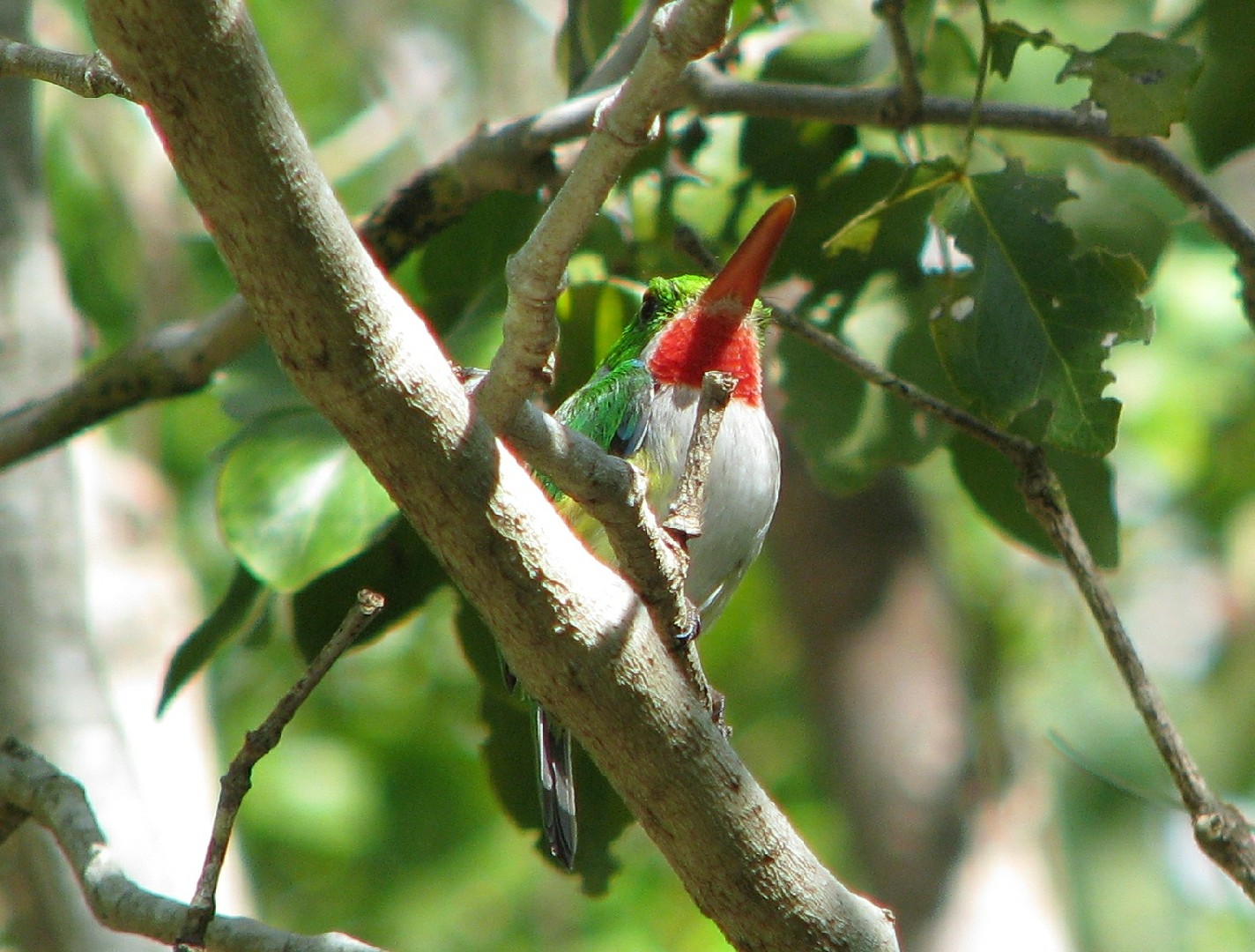Puerto Rican Tody
A species of Todies Scientific name : Todus mexicanus Genus : Todies
Puerto Rican Tody, A species of Todies
Botanical name: Todus mexicanus
Genus: Todies
Content
Description General Info
Description
The Puerto Rican tody is a small, brightly colored, non-passerine forest bird. It is one of the smallest representative of the order Coraciiformes, with an average body length of 11 cm and weight of 5 to 6 g. The upperparts of the Puerto Rican tody are an emerald green color, and it has light-yellow flanks and underside tail coverts, and a white belly and chest. The "San Pedrito", also known as "Medio Peso" by the local people, has a red throat and lower bill, which in itself is long and broad. It can be as long or longer than the head, and as half as long as the wing. Their legs and feet are a brownish color and the tarsus is similar in length to the bill. Both males and females have a short tail, ranging from two-thirds to three-fourths as long as the wings. Males and females are not sexually dichromatic, and their only difference is their eye color; males have gray eyes whereas females' eyes are white. The young have similar colored feathers as the adults, but lack the red markings, have a grayish colored belly and have shorter bills. 
Size
11 cm
Life Expectancy
12.6-13 years
Nest Placement
Cavity
Feeding Habits
Puerto Rican Tody, an insectivore, primarily consumes insects, spiders, lizards, seeds, and fruit. Notably, it also preys on small frogs. It employs specific foraging and hunting techniques tailored to a diverse diet, showcasing unique dietary preferences and adaptations.
Habitat
Forested areas, high-altitude damp forests where insect concentrations are higher, dense thickets 
Dite type
Insectivorous
General Info
Feeding Habits
Bird food type
Behavior
Puerto Rican todies are rarely seen on the ground; they usually prefer perching, unless when nesting. When todies are on the ground they hop. An unusual fact is that to enter their burrow they have a favorite perching spot on which they land before heading to their nest. The Puerto Rican tody, unlike other Coraciiformes, roosts alone in trees both during the day and at nighttime. 
Species Status
This tody is a common endemic species to the island of Puerto Rico. It is currently classified as Least Concern by the IUCN. During the past, the Puerto Rican tody suffered from human predation as it was captured as food. Currently it suffers from nest predation by introduced Indian mongooses. Other threats include habitat destruction and the transition of shaded coffee plantations into sun coffee plantations. 
